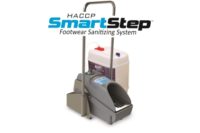Creative Solutions Needed for ai Problem
by Simon Shane
Export figures assembled by USDA-Economic Research Service (ERS) confirm the impact of trade embargoes resulting from cases of low pathogenicity avian influenza (LPAI) in the live-bird market (LBM) and in non-commercial broiler flocks in the United States. For the six months ended June 2004, total exports amounted to 921,341 metric tons, which equals 86 percent of the export volume during the corresponding period of 2003.
Shipments to major trading partners were severely impacted by embargos due to avian influenza (AI). Russia, the largest purchaser, which represented 30 percent of U.S. exports in the first half of 2003, reduced imports by 8 percent. Hong Kong ranked second in volume at 77,608 metric tons, reduced imports to 35 percent of their 2003 volume. Due to decreased volume the U.S. broiler industry effectively lost $435 million at the higher world prices which prevailed during the first half of 2004. The USDA projects a decline in annual volume of shipments from an actual value of 2.525 million metric tons in 2003 to an estimated 2.090 million metric tons in 2004.
Brazil is the obvious beneficiary of the extensive epornitic of highly pathogenic avian influenza (HPAI) in Southeast Asia that virtually eliminated exports from Thailand and China. In some measure, Brazil has also displaced the United States in traditional markets following voluntary reporting of isolated cases of LPAI.
Lessons learned from Virginia
During the past three years, outbreaks of LPAI have occurred in North Carolina, Virginia, Connecticut, Maryland, and Delaware. Most of these cases can be traced back to extensions from the LBM system in which H7N2 is now regarded as endemic.
The 2002 outbreak of H7N2, LPAI in turkey flocks in northwest Virginia cost more than $100 million to eradicate. Although LPAI is under the purview of individual states, federal assistance was provided for control and subsequently funds for compensation were made available by the USDA.
Subsequent to the Virginia outbreak, the USDA Animal and Plant Health Inspection Service (APHIS) suggested that the Committee on Transmissible Diseases of Avian Species review alternative approaches to the control of LPAI caused by H5 and H7 strains. A meeting in San Antonio considered the need for destruction of flocks, the use of vaccines, and the role of LBMs in dissemination of LPAI. Recommendations were forwarded to the USAHA meeting in St. Louis, and one indirect result of this meeting was the decision to administer inactivated influenza vaccine to suppress an outbreak of H7N2, LPAI in egg-producing flocks in Connecticut early in 2003.
The USAHA eventually forwarded a “model control and eradication program” to USDA for its consideration in developing a national control and eradication program for LPAI. The proposed state-based initiative would be coordinated at the federal level and would make provision for compensation to owners of birds depleted during control activities. The model control program considers both commercial poultry and the live-bird market system. Participating states would be required to maintain an active H5/H7 influenza monitoring program for commercial flocks as approved by the National Poultry Improvement Program (NPIP). This would entail certification of laboratories, developing procedures for surveillance, and reporting positive serology. Participation by commercial producers would be governed by memoranda of understanding mandating support for serologic and diagnostic surveillance.
Control and eradication policies
The tendency of H5 and H7 low-path strains to mutate and become highly pathogenic has stimulated OIE to reconsider the definition of “high and low” criteria of pathogenicity. The question of when and if OIE amend the definition of H5/H7 AI has an important bearing on U.S. policy. Decisions by the OIE will also influence international trade including designation of areas deemed to be infected (“regionalization”) and appropriate quarantine periods restricting shipment of processed poultry.
Policy on control and eradication raises a number of contentious issues. The traditional approach of “stamping out” HPAI is not appropriate to all situations and nations. Attempts to eradicate H5N1 HPAI in Vietnam and Thailand have not been successful, and the best that can be said is that clinical outbreaks have been suppressed. Low-path and high-path AI have been prevalent in this country since at least 1997. It is evident that developing a comprehensive program to control and eradicate all H5 and H7 strains in the United States will depend on determinations made by OIE with inevitable trade implications.
Veterinarians affiliated to turkey, broiler, and commercial egg producers are divided in their response to avian influenza. Avian-health professionals regard a combination of vaccination and slaughter as appropriate. Dr. Travis Cigainero of Pittsburg, TX-based Pilgrim’s Pride favors vaccination of all “long-lived” birds including breeders and commercial egg production flocks. Broilers would be subjected to a uniform national surveillance program involving serologic sampling at processing. Some veterinarians feel that intensive surveillance is prejudicial to the U.S. industry since, as exporters, the U.S. competes with countries that do not maintain the same level of diagnostic and serologic intensity, virtually turning a blind eye to the presence of LPAI. The questions circulating in corner offices at APHIS are how much money would be available and how many birds could be killed in the event of an extensive outbreak?
The House of Representatives Appropriations Subcommittee on Agriculture has included $23 million for fiscal 2004/2005 to facilitate control of LPAI by APHIS. Experience in Europe suggests that extensive depletion of flocks prompt extensive consumer and public resistance. This adds an additional dimension to the traditional considerations of logistics, expense and environmental components of eradication programs.
Ultimately, a rational and cost-effective program to suppress LPAI will evolve. This will be critical to maintaining a viable export market necessary for the continued profitability of the U.S. broiler industry. The OIE will in all probability declare all H5 and H7 AI isolates as “highly pathogenic” or some similar designation, which will generate specific trade restrictions. Our negotiators must press for the principle of compartmentalization based on local or regional occurrence of AI. This is a contentious issue since many integrators operate on a regional basis with product within a complex moving across state lines.
The reluctance of regulatory authorities to accept vaccination as an acceptable method of preventing and controlling LPAI should be reappraised. Research on new vaccines including a recently described, genetically-engineered vector product, offer the potential for more effective control of AI. In the interim, inactivated vaccines applying the DIVA principle (differentiation of infected from vaccinated animals) can be used to control LPAI. It is evident that the World’s poultry industries cannot be constrained by policies and philosophies based on the economic realities and scientific knowledge of the mid-1970s. Contemporary challenges require innovative solutions. NP
Dr. Simon Shane is an Emeritus Professor of the Department of Epidemiology and Community Health, School of Veterinary Medicine, Louisiana State University. Shane serves as an Adjunct Professor in the Department of Poultry Science, North Carolina State University.





Report Abusive Comment